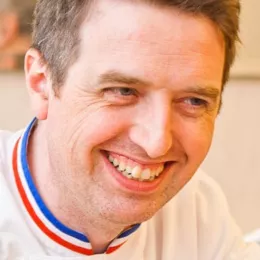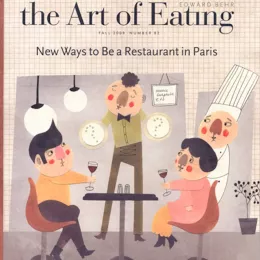ICE Chef Instructor Toba Garrett wasn’t always a master cake decorator, renowned for her unusually attractive, skilled and delicious confections. Her prior work experience spanned the fields of theatre, education and computer science, before she changed her life through culinary education. In her 20th year as a Chef Instructor at ICE, it could not be more fitting that Toba launch ICE’s brand new, 8-week professional development program: Techniques and Art of Professional Cake Decorating. We sat down with Toba to learn more about this exciting program and how she found her culinary voice.
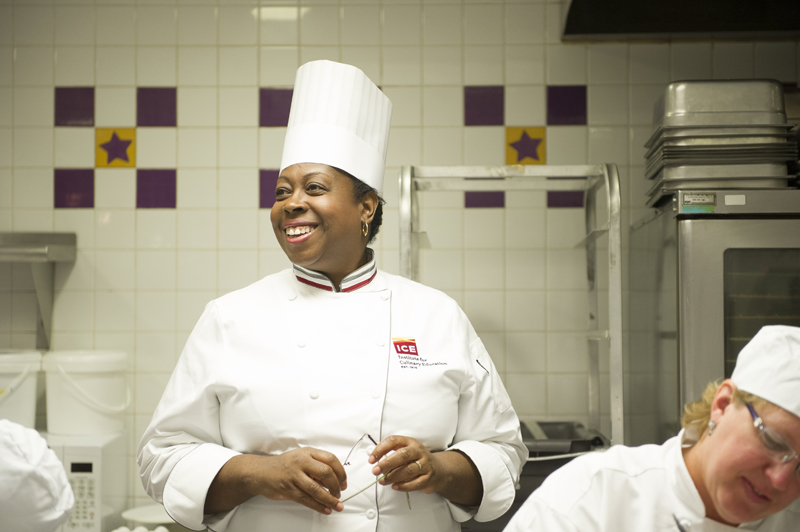
After 20 years in the industry, why do you feel this is the right time for ICE to launch a professional cake decorating program?
There are perhaps two kinds of students who take classes with me. Students who are career minded, looking to add to what they already know, and who already have some kind of skills but lack the training to make a cake look as good as it’s going to taste. Then I have the student who perhaps has seen beautiful cakes on Food Network and thinks, “Wow that looks really exciting, maybe this is something I’d like to do.”
The purpose of this program is to bridge both gaps. It takes the person who has some skills and allows them to learn the craft behind the skill. That’s something which is really needed in the industry. A program like this gives a student with some skill a shot at making this a career. As for those who have always had the interest but felt – say within the ICE recreational program – that they haven’t been offered enough skills, this is an opportunity for them to move beyond basics.
What are they elements of the program that you are most excited to teach?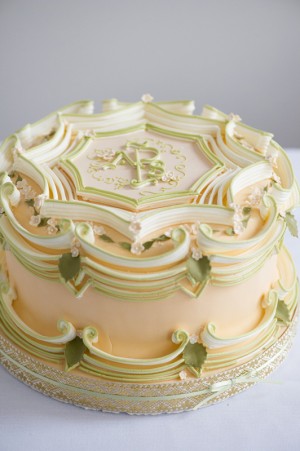
The art of piping. Often, when I travel and teach around the world, I find most students have very poor piping skills. Many have very good eye hand coordination and can take a product like fondant, marzipan, or gum paste and create three dimensional figurines exquisitely. What they lack is the ability to pipe a border or a handwritten greeting. This program focuses on classic cake artistry.
Students will learn how to create modern cakes, and also how to make cakes that were done 100 years ago, when the art of pipework was really at its best. That was a time when the look of the cake was more dimensional because there wasn’t a lot of pre-fabricated items put onto the cake. Rather, the skill of the artist was to create dimension by piping.
When I teach a class like Australian string work or in the Lambeth or the South African style of cake decorating, people see these techniques and say, “Oh my god I’ve never seen that before.” Well those styles have been around for decades, it’s just that somehow we lost the art. When you see TV programs where things are just rolled out, covered and then cut out pieces are placed onto the cake – that’s not cake artistry, it’s sugar sculpting. Cake artistry is part of sugar sculpting, but the hardest thing to do is to pipe.
Who are some of the innovators in the field that you most respect?
In New York, we just so happen to have some of the best cake designers in the world: Colette Peters, Ron Ben-Israel, Margaret Braun, Cheryl Kleinman, Ellen Baumwoll, Sylvia Weinstock—many of whom are good friends. I think we all respect each other and respect what each of us do because we all do something a little bit different. When you look at our work, you know it by our signature styles.
How did you get into the field of cake decoration?
I’ve had several career changes. I was born, perhaps “at the right time” and raised in a small town in Newport, RI. Living in a small town, I had the opportunity to become inventive, to be myself. I took voice lessons, dance, I learned to play the piano. In high school, I got involved with theatre and went on to do regional work in the theatre. It was my passion to come to NY and look for a career in the theatre. My parents said to me as long as I went to school and got a college degree I could do whatever I wanted. So I pursued theatre as I went to school. Opportunities just started happening, so I had a rich life. A little theatre, a little this, a little that.
 In the early 70s I attended a party where my friend had a decorated cake. I thought she had purchased it. When I learned she had done this herself, that sparked a kind of interest in me. It was something I wanted to learn, because I saw this not just as food, but as artistry. One day she mentioned where she picked up her supplies – a place out in Queens called Deco Cake and Candy School. I called and asked “do you give lessons?” And that’s how it started. Once I took my first basic class – I didn’t really know what to expect – all I know is that as a student the decorating hypnotized me. Just the fact that I didn’t have to go to the supermarket to buy a can of Betty Crocker frosting - that I could make buttercream all on my own – was exciting.
In the early 70s I attended a party where my friend had a decorated cake. I thought she had purchased it. When I learned she had done this herself, that sparked a kind of interest in me. It was something I wanted to learn, because I saw this not just as food, but as artistry. One day she mentioned where she picked up her supplies – a place out in Queens called Deco Cake and Candy School. I called and asked “do you give lessons?” And that’s how it started. Once I took my first basic class – I didn’t really know what to expect – all I know is that as a student the decorating hypnotized me. Just the fact that I didn’t have to go to the supermarket to buy a can of Betty Crocker frosting - that I could make buttercream all on my own – was exciting.
Back in the US in the 70s, you only saw buttercream icing, piped borders, piped roses and piped greeting. The only time you saw a cake decorated in the English style with royal icing – where the cake is covered in rolled fondant with beautiful, delicate pipe work and hand-shaped flowers – was at salon-style competitions. I started to enter competitions. That’s where I saw people with the same sort of passion that I had, but I found there was no place to study it in NY.
I had a teaching background so I figured if I can teach computer science, I can certainly teach them to pipe a line of icing, pipe borders, learn the science of cake art. After working part-time at a number of places in NYC, Nick Malgieri brought me to ICE. He knew we needed to teach the career students skills in piping and modeling work. He also wanted to offer cake decoration in the recreational division.
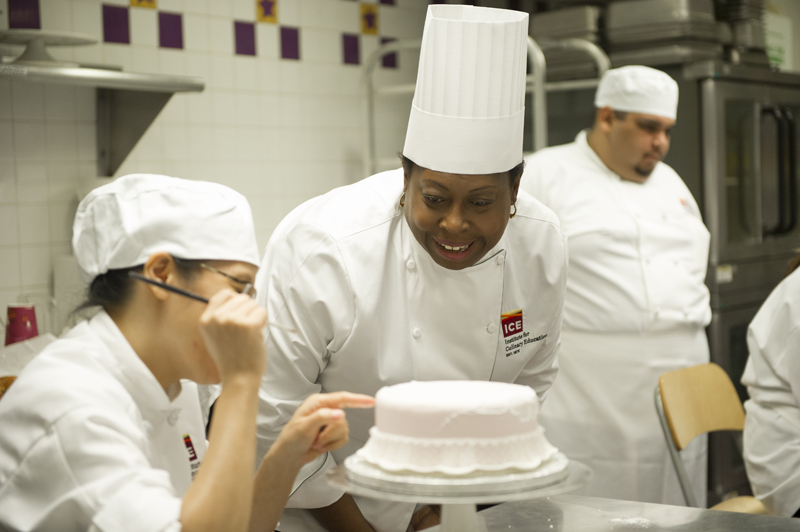
Before you started teaching you have said that cake decoration was traditionally learned from books. Why then create an intensive, in-person program?
Very few people have the ability to look at a picture or read instruction and be able to execute it. I have students who come to class and have a book by me or another colleague, and − even though we explain it step by step−some people need to watch as the person demonstrates. A hands on class is very important because it helps correct problems, like holding the pastry bag at the wrong angle. I think most of my success has been because I’ve spent a great deal of time studying a variety of styles with a wide range of people, instead of trying to learn everything on my own. Once you have a foundation of skills, you can build on that by applying those techniques in a different way.
What are three things people who are going into this industry should know? You need to learn how to bake – that’s crucial. It’s not how it was 30 years ago, when you took a class but you had icing that didn’t taste like real icing. To that point, you need to learn how to make a plethora of icings. It’s “old school” to use the same icing for the whole cake. “New school” is to use different types of icing that complement each other. Today, when people bite into a cake, they want a complexity of flavor. Finally, you should learn a variety of ways to make a cake look beautiful. Not every cake needs pipe work. You can do something very simple like a sponge cake with some kind of filling and icing swirled onto the cake. It doesn’t even need to be exquisitely smooth. Then, you can create little cigarettes out of tempered white chocolate to cover the entire cake. That’s absolutely stunning! If you have skill, my god there’s no end to it.
To learn more about the Techniques and Art of Professional Cake Decorating Program, click here.



